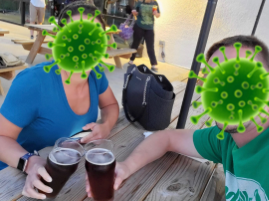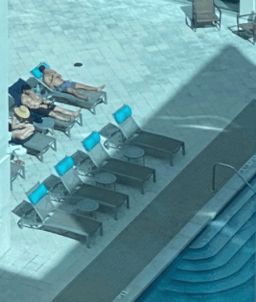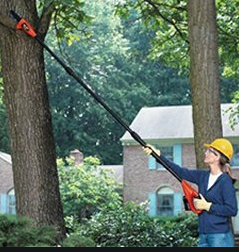We’ve been writing a lot about physical distancing lately, as this has proven to be the most effective way to slow the spread of COVID-19. Without limiting social contact, we don’t have a chance at slowing the spread of the infection - which means an overloaded healthcare system and a lot of unnecessary deaths.
Every single human interaction that we decrease is a part of the solution. True, you can’t NEVER leave your house. If you go to the grocery store every two weeks instead of weekly, you’re cutting potential risk in half.
Our team has noticed, though, that there seem to be some misconceptions about what’s ok to and what isn’t. So, I wanted to take this opportunity to give some practical examples of what IS proper physical distancing, and what isn’t.
- Playgrounds
Playgrounds are tricky. One would think that because they’re outside in the sunshine and fresh air, they’re safe - but viruses are tricky little things. Even if the playground is empty when you get there, you don’t know who was there before you and where they rubbed their snotty noses - and according to the New England Journal of Medicine, COVID-19 can live on surfaces for hours to days, depending on the surface and humidity.
Additionally, you don’t honestly know whether you or your kids are carrying the virus. Since it has such a long incubation period during which you’ll show no symptoms, it’s entirely possible that you’d be leaving COVID-19 all over the playground equipment for the next family to pick up.
Try Instead: Taking a bike ride, scooter ride, or walk (being careful to avoid potentially crowded areas). - Playdates
This one is heartbreaking. Little kids all over the world are confused about why they’re stuck at home from school and why they can’t see their friends. Many states are banning gatherings of groups larger than 10 people, but that doesn’t mean that smaller gatherings are safe. Every person you invite into your home - whether adult or child - threatens the safety of your family (and again, you won’t know you have the virus right away, so you might be unwittingly exposing your friends too).
It’s hard and sad, but just say no to playdates. And this includes for your teenagers! They might hate you for it now, but they’ll thank you for it later.
Try Instead: A safer option would be to let your kids Facetime with their friends. - Eating at a Restaurant / Bar Patio
 My Facebook feed is full of people going out to eat, justifying it by saying that they sat outside on the patio far from other people. I hate to be the bringer of bad news, but this isn’t physical distancing.
My Facebook feed is full of people going out to eat, justifying it by saying that they sat outside on the patio far from other people. I hate to be the bringer of bad news, but this isn’t physical distancing.
You’re at a table that hasn’t been sanitized, sitting on chairs that haven’t been either, eating food and using dishes and utensils brought to you by a stranger who surely isn’t wearing proper protective equipment. You’re surely not six feet away from everyone all the time, you touched the door handle on the way in, and you’re exposing the waitstaff and cleaning staff to your germs.
Try Instead: Take a lawn chair and a packed dinner to a friend’s house, and sit more than six feet away while dining outside. Don’t share anything, don’t touch anything, but enjoy the company of a friend! - Using Library Car Side Services
Although the American Library Association has officially recommended that all libraries close, many are still doing carside book pickup and drop off. The idea is that they’re reducing the number of people in the library since everyone is staying in their cars - but they’re neglecting the fact that the books themselves are capable of passing around COVID-19. Library staff are being tasked with cleaning the books (though I happen to know of one library system only providing soap and water to do so) - but you can’t clean the pages of books.
Try Instead: Check your library website for access to digital resources. Most have an app you can log in to to access digital or audio copies of books.
Chance digital library assets have COVID-19 on them = 0
Chance library books have COVID-19 on them = much > 0 - Relaxing Poolside
 As the weather gets warmer, people are flocking to their apartment complex pools - likely thinking the chlorine, sunshine, and fresh air are keeping them safe.
As the weather gets warmer, people are flocking to their apartment complex pools - likely thinking the chlorine, sunshine, and fresh air are keeping them safe.
Can you spot any potential issues in this picture?
They’re laying on public pool chairs, which surely haven’t been sanitized before their use - and probably won’t be sanitized when they’re done.
They’re laying side-by-side. I could be wrong, but I doubt all those guys live together - in which case they’re all infecting each other.
Try Instead: Sunbathe in your yard or take a bath. Sorry, I don't have a great substitute here. - Having a Few Friends Over
Because clear definitions and recommendations aren’t being made about social distancing, people still think it’s ok to gather in small groups. I’ve seen lots of “Corona Parties,” game nights, census parties, movie nights happening - all of which are contributing to the spread of this virus. Yes, you’re legally allowed to have a few friends over - but each of them (including you) is a potential carrier, and each person you interact with is another point in the spread of the virus.
Try Instead: Have you heard of Netflix Party? You and your friends can log in, sync up, and watch Netflix together - complete with instant messaging. Grab a glass of wine and 10 of your closest friends for some virtual hang time! - Walking on Highly Congested Trails
I feel like I’m getting repetitive here - but again, I’m seeing this all the time in pictures on social media. Taking a walk outside = good. Taking a walk on a crowded trail = bad. If you can’t stay six feet away from people at all times, the trail is too crowded.
Try Instead: Hit up trails outside of town. It’s perfectly safe to get in your car and drive somewhere, just use gloves or wipe down the gas pump. Remote trails are likely to be less crowded than the main trails you always walk in town, and are perfectly safe as long as you stay away from people and don’t touch anything. - Getting a Haircut
The average human arm is only 25” long - so there’s no way your hairdresser or barber can cut your hair without violating the 6’ rule. Unless they’re using one of these, haircuts are out for a while.
Image Source: toolmonger.com
Try Instead: Channel your inner Johnny Depp and let your locks grow wild. - Reducing the Guest List for Weddings
This is surely the hardest one on the list. It takes years to plan a wedding, and a lot of your deposits probably aren’t refundable (I’m hoping everyone will be reasonable and refund anyway) - not to mention all the emotions, hopes, and dreams tied up in having the perfect wedding. Unfortunately, this falls under the same umbrella as playdates and game nights. Even small group gatherings promote the spread of COVID-19.
Try Instead: This is a highly personal decision, with no good options. Some people are choosing to postpone, others are canceling and going to the courthouse instead. Whatever you decide, I’m so sorry if you’re facing this right now. - Social Golfing
My friend lives on a golf course and is dismayed by what he sees taking place out there. From sharing golf carts and picking up each other’s balls to handling the flagstick and reaching into the hole to retrieve their balls, many usual activities of golfers needs to change for now.
Try Instead: Walk instead of using golf carts. Only handle your own balls and clubs. Stick a cup in the hole and count hitting the cup as going in. Or, work on your golf game at home.
I hope these examples have shed some light on common activities that seem safe but aren’t. It’s important to remember that each decision you make has the potential to save - or cost - lives, and that we have a social responsibility to limit social contact as much as possible.
Leave a comment below with other recommendations for how we can still fill our social needs while keeping our communities safe!
ABOUT THE AUTHOR:
Dr. Greg Jacobson is the CEO and co-founder of KaiNexus. He's also an ER doctor of 20 years and is married to a double-boarded doctor with more experience. He realizes that his family has a unique perspective, and therefore, he has a duty and obligation to educate and influence as many people as possible about preventing the spread of COVID-19.


Add a Comment